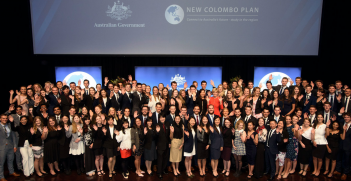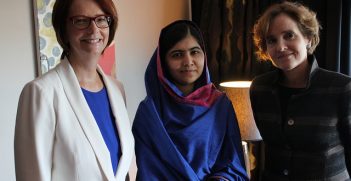Internationalising Australian Higher Education

Higher education in Australia is becoming increasingly internationalised, not only through attracting international students but also by taking Australian universities overseas. By leveraging this comparative advantage in education, Australia can reap both the social and economic benefits.
In Australia, when we talk of international education, and particularly international education in universities, we understand its importance to the future of our universities and to our nation. We recognise it largely because international education, of which higher education is the most significant part, is Australia’s largest service export and its third largest export industry, earning $28.6 billion in 2016-17. These facts have now been repeated sufficiently in the last decade that they have become general knowledge.
No longer riding on the sheep’s back, nor even dependent on what we dig from the ground, Australia’s prosperity for the first time in its history is in significant part dependent on the international quality of its education—which is in turn dependent on its scholars and in the knowledge they generate and disseminate.
International students and scholars
International students in higher education in Australia now number more than 300,000, making up some 26 per cent of total higher education students. While some nations with larger populations have a larger number of international students, the proportion of international students in Australian higher education is higher than for any other nation.
The majority of Australia’s international students come from the nations around us, and form a substantial human bridge between Australia and those nations.
Academics in Australian universities are also increasingly diverse, though they are slightly more likely to come from the United Kingdom, North America and Europe than from China, India and the countries from which international students are drawn. Moreover, Australian universities have reached out to draw in the best researchers and educators they can hire from across the world, valuing talent above national identity.
They have worked to draw international students to them, enriching the experience of Australian domestic students, as well as creating a major service export. They have also worked to ensure that increasing numbers of Australian university students have an international study experience that broadens their education and capabilities.
Internationalising Australian education
Australian universities have made links not only with universities in countries from which their institutional tradition derives, such as the UK, but also with universities in the countries around us. And by establishing branch campuses in those countries, some universities are also more closely engaging with those nations’ governments, their companies and their communities.
This Australian story is not the story of university systems everywhere. Even though it is not unique, this story is rarely seen at this scale nor so widespread across all the public universities in a system. How did we get here? And what might we expect next?
Since the 1980s Australia has built an increasingly internationalised university system that not only serves the nation economically, but also builds its links and its place in the Asia-Pacific region.
The hundreds of thousands of graduates who have been educated in Australia, and now work across the Asia-Pacific region and the world, are important because they have had educational experiences that provide the foundation for rich contacts with the nations around us.
We have yet to achieve the levels of cultural competence across nations and across our graduates to which we aspire, but Australian universities do aspire and strive to make that potential real for domestic and international students alike.
The links with researchers in universities in our region and with industry partners and government agencies provide the means to engage in our region on issues as diverse as public health, governance and justice systems, transport infrastructure and sustainable resource use. In future these links should be part of the way we engage not only in solving global challenges, but also in being part of global innovation and supply chains.
How did Australia get here?
We got to this point because at key moments federal government policy opened the door and Australian universities stepped firmly through. We got to this point because, despite the White Australia policy in place during the years of the first Colombo Plan, we opened our minds on immigration and engagement with our region.
We know, according to the Scanlon survey that most Australians today remain convinced that immigration is a benefit to the nation and that multiculturalism is a good thing. The majority have remained so convinced, in about the same proportions for more than a decade, and despite the surges of populism beyond Australia and within it.
This has been an important foundation for welcoming international students and staff to Australia and for allowing them the potential to stay in Australia. This has supported international education and it has provided the open borders necessary to support the attraction of talented students and academics that are the wellspring of high quality education and research in universities.
Where to from here?
The internationalisation of Australian universities is of major benefit to Australia. And the benefits are greater and more long lasting than a number in the national accounts or the budgets of our universities.
There is no international education or research that is separate from domestic education and research. There is no high quality domestic higher education or research, or high quality Australian university, unless it is also international. True excellence in university education and research cannot be realised without some depth of global engagement and understanding.
Internationalisation is necessary to the purpose of universities. Without the openness that this brings, vitality is sapped and they wither. The breadth of internationalisation that we find in Australian universities is their future and their purpose. And it is from this broad and worthy purpose, that all the benefits, measurable and immeasurable, economic but also profoundly social and human, come to this nation of ours. It is worth encouraging, it is worth protecting, it is a benefit without borders.
Professor Margaret Gardner AO is the president and vice-chancellor of Monash University. This is an extract of her speech to the AIIA VIC Sir Zelman Cowen Oration Dinner on 3 October 2017.
This article is published under a Creative Commons Licence and may be republished with attribution.





